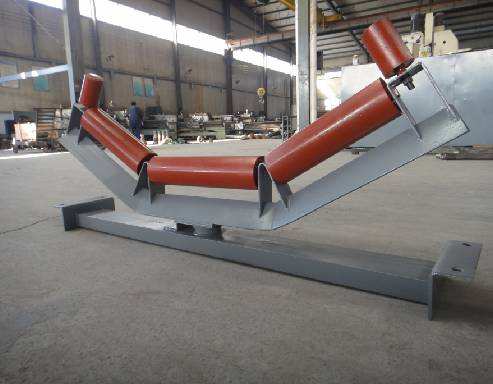 Afrikaans
Afrikaans  Albanian
Albanian  Amharic
Amharic  Arabic
Arabic  Armenian
Armenian  Azerbaijani
Azerbaijani  Basque
Basque  Belarusian
Belarusian  Bengali
Bengali  Bosnian
Bosnian  Bulgarian
Bulgarian  Catalan
Catalan  Cebuano
Cebuano  Corsican
Corsican  Croatian
Croatian  Czech
Czech  Danish
Danish  Dutch
Dutch  English
English  Esperanto
Esperanto  Estonian
Estonian  Finnish
Finnish  French
French  Frisian
Frisian  Galician
Galician  Georgian
Georgian  German
German  Greek
Greek  Gujarati
Gujarati  Haitian Creole
Haitian Creole  hausa
hausa  hawaiian
hawaiian  Hebrew
Hebrew  Hindi
Hindi  Miao
Miao  Hungarian
Hungarian  Icelandic
Icelandic  igbo
igbo  Indonesian
Indonesian  irish
irish  Italian
Italian  Japanese
Japanese  Javanese
Javanese  Kannada
Kannada  kazakh
kazakh  Khmer
Khmer  Rwandese
Rwandese  Korean
Korean  Kurdish
Kurdish  Kyrgyz
Kyrgyz  Lao
Lao  Latin
Latin  Latvian
Latvian  Lithuanian
Lithuanian  Luxembourgish
Luxembourgish  Macedonian
Macedonian  Malgashi
Malgashi  Malay
Malay  Malayalam
Malayalam  Maltese
Maltese  Maori
Maori  Marathi
Marathi  Mongolian
Mongolian  Myanmar
Myanmar  Nepali
Nepali  Norwegian
Norwegian  Norwegian
Norwegian  Occitan
Occitan  Pashto
Pashto  Persian
Persian  Polish
Polish  Portuguese
Portuguese  Punjabi
Punjabi  Romanian
Romanian  Russian
Russian  Samoan
Samoan  Scottish Gaelic
Scottish Gaelic  Serbian
Serbian  Sesotho
Sesotho  Shona
Shona  Sindhi
Sindhi  Sinhala
Sinhala  Slovak
Slovak  Slovenian
Slovenian  Somali
Somali  Spanish
Spanish  Sundanese
Sundanese  Swahili
Swahili  Swedish
Swedish  Tagalog
Tagalog  Tajik
Tajik  Tamil
Tamil  Tatar
Tatar  Telugu
Telugu  Thai
Thai  Turkish
Turkish  Turkmen
Turkmen  Ukrainian
Ukrainian  Urdu
Urdu  Uighur
Uighur  Uzbek
Uzbek  Vietnamese
Vietnamese  Welsh
Welsh  Bantu
Bantu  Yiddish
Yiddish  Yoruba
Yoruba  Zulu
Zulu roller conveyor components
Understanding Roller Conveyor Components A Comprehensive Overview
In the realm of material handling systems, roller conveyors play a pivotal role in facilitating the efficient movement of goods across various industrial environments. These systems are designed to transport a diverse range of products, from packages to pallets, using a series of rollers that enable smooth and controlled movement. A crucial aspect of roller conveyors is their components, which work together to ensure optimal performance and reliability. This article delves into the essential components of roller conveyors and their respective functions.
1. Rollers
At the heart of any roller conveyor system are the rollers themselves. These cylindrical units, typically made from materials such as steel or plastic, enable the smooth movement of items along the conveyor. Depending on the application, rollers can be powered or free-running. Power rollers are driven by a motor and are ideal for transporting heavier loads, while free-running rollers allow gravity to move lighter products. The choice of roller type and material is critical to the conveyor's performance, lifespan, and the specific handling needs of the materials being transported.
2. Frame
The frame of a roller conveyor provides the structural support necessary to hold all components in place. Usually constructed from steel or aluminum, the frame must be robust enough to withstand the weight of the products being conveyed while also resisting wear and tear from continuous use. The design of the frame can significantly influence the conveyor’s flexibility and scalability, allowing for customization based on the layout of a facility and the types of products being moved.
3. Drive Mechanisms
In powered roller conveyors, drive mechanisms are essential for propelling the rollers. These mechanisms typically include electric motors and belts or chains that connect to the rollers. The choice of drive system can affect both the speed and efficiency of the conveyor. Variable speed drives are particularly useful in applications where different handling rates are required. Proper integration of the drive mechanism is crucial for maintaining consistent performance and reducing downtime during operation.
roller conveyor components

Supports and legs provide the necessary elevation and stability for roller conveyors. These components are adjustable to accommodate different heights and configurations, which is vital for creating a seamless workflow in a production line. The design must ensure that the conveyor maintains a level surface to prevent product roll-off and facilitate smooth transportation.
5. Belts and Chains
While roller conveyors primarily use rollers for movement, belts and chains may also be integrated into some designs to enhance functionality. These components can assist in controlling the speed of the rollers and provide additional grip for products with varying surfaces or sizes. For instance, belt-driven roller conveyors are often used for conveying lightweight or fragile items, providing increased control.
6. End Stops and Guides
End stops and guides are safety features that help to prevent products from falling off the conveyor. End stops are positioned at the termination points of the conveyor, ensuring that loads do not roll off unexpectedly. Guides, on the other hand, help to direct products along the intended path, especially in situations where items may shift during transportation, such as when dealing with unevenly shaped goods.
7. Control Systems
Modern roller conveyors often incorporate automated control systems, allowing operators to monitor and manage the flow of materials with precision. These systems can include sensors, programmable logic controllers (PLCs), and user interfaces that enhance operational efficiency and enable real-time adjustments to the conveyor's speed and direction. With advancements in technology, integrating control systems has become easier, providing better insights into material flow and system health.
Conclusion
Roller conveyor components are vital for ensuring the effectiveness and reliability of material handling systems. Each component plays a unique role, and understanding their functions can help businesses optimize their operations. By investing in quality components and maintaining them properly, organizations can enhance productivity, reduce operational costs, and ultimately improve their overall supply chain efficiency. In a fast-paced industrial world, roller conveyors stand out as indispensable tools for moving products seamlessly from one point to another.
-
Revolutionizing Conveyor Reliability with Advanced Rubber Lagging PulleysNewsJul.22,2025
-
Powering Precision and Durability with Expert Manufacturers of Conveyor ComponentsNewsJul.22,2025
-
Optimizing Conveyor Systems with Advanced Conveyor AccessoriesNewsJul.22,2025
-
Maximize Conveyor Efficiency with Quality Conveyor Idler PulleysNewsJul.22,2025
-
Future-Proof Your Conveyor System with High-Performance Polyurethane RollerNewsJul.22,2025
-
Driving Efficiency Forward with Quality Idlers and RollersNewsJul.22,2025





























